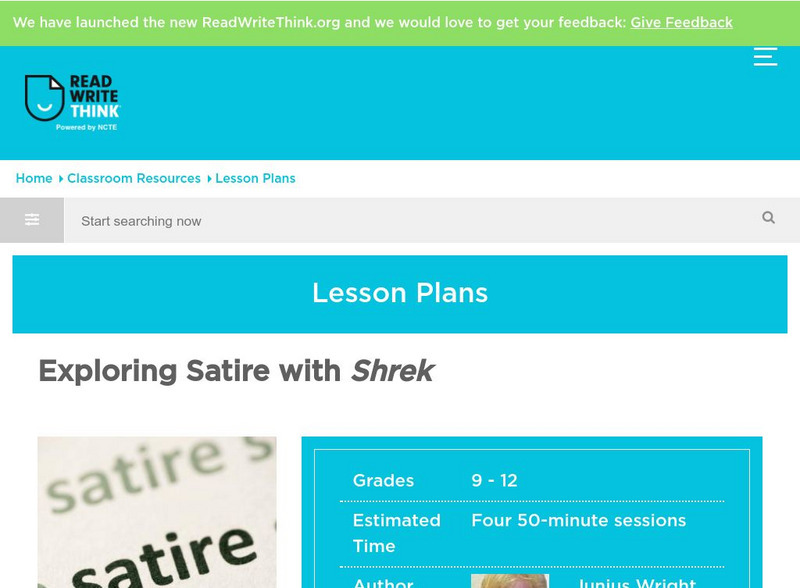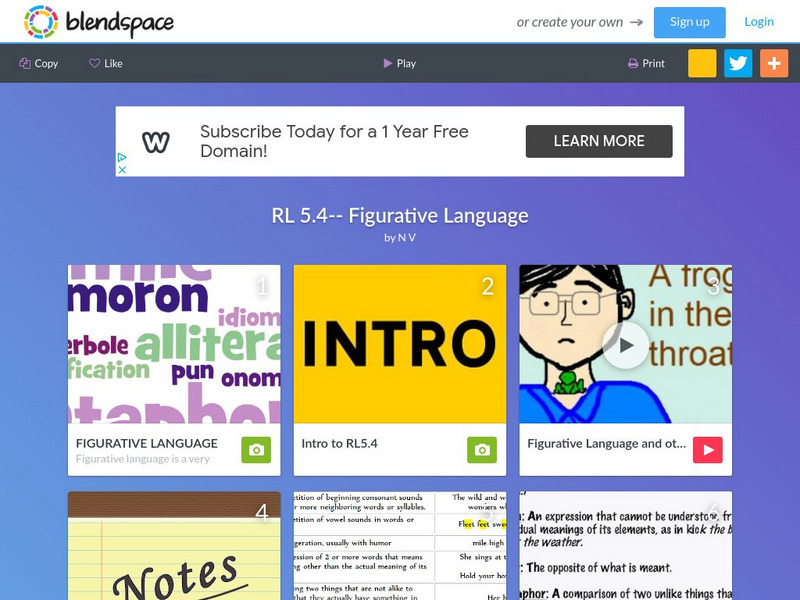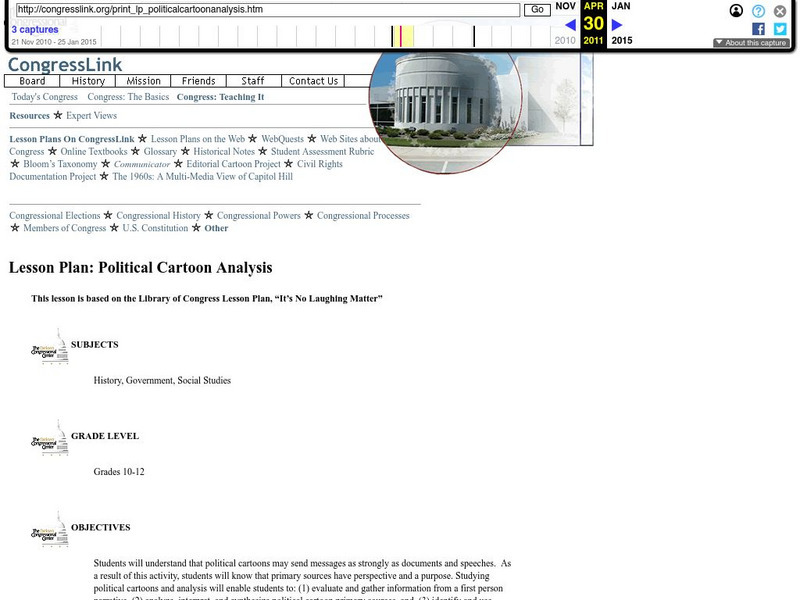Hi, what do you want to do?
Curated OER
Octavio Paz
Tenth graders read and analyze the poem, "The Street," by Hispanic author, Octavio Paz. They research the life of Octavio Paz and identify his literary contributions. They complete an online scavenger hunt and create an author map of...
Curated OER
Bringing the Line to Life
Students use different types and lengths of sentences. They write with an insight of the stylistic aspects of composition. Students use precise language including adjectives, adverbs, action verbs and specific details that convey the...
Curated OER
Murals, Memories, and Making Art
Fourth grade reading students study art works by famous artists. They use various tools for learning about the artist, and they present their information by writing and speaking about the artist. They also create artwork in the style of...
Curated OER
Flora and Fauna as Figures of Speech
Students view artwork in manuscript pages depicting insects, animals, plants, flowers, and ornate writing, such as those found in the Mira calligraphiae monumenta in the Getty Museum.
Texas Education Agency
Texas Gateway: Hyperbole and Understatement (English Ii Reading)
[Accessible by TX Educators. Free Registration/Login Required] In this lesson, you will learn to recognize hyperbole and understatement in nonfiction. Good examples also appear in other forms of writing such as fiction and poetry, but we...
Texas Education Agency
Texas Gateway: Literary Text: Hyperbole and Understatement
[Accessible by TX Educators. Free Registration/Login Required] In this lesson, you will learn to recognize hyperbole and understatement in nonfiction.
Georgia Department of Education
Ga Virtual Learning: Descriptive Writing: Similes, Metaphors, Cliches, Hyperbole
This lesson focuses on figurative language used in descriptive writing including similes, metaphors, cliches, hyperbole. It offers multiple links to websites pertaining to figurative language in descriptive and creative writing; an...
Love To Know Media
Your Dictionary: Literary Terms Lesson Plan
This is a lesson plan for teaching the seven literary terms used in poetry: simile, metaphor, alliteration, imagery, hyperbole, personification, and onomatopoeia.
Other
Poetry4 Kids: Poetry Lessons
This resource offers guidance through the writing process of writing funny poetry. There are instructions on how to write a clerihew and an exaggeration poem.
Sophia Learning
Sophia: Hyperbole
This lesson introduces hyperbole as a rhetorical device. This tutorial lesson shares a short slideshow with the lesson's content.
TES Global
Blendspace: Hyperbole
Work through fifteen links to images, videos, and activities to learn about hyperbole.
TES Global
Blendspace: La Figurative Language Hyperbole
Work through six links to images, videos, and activities to learn about hyperbole.
Science Education Resource Center at Carleton College
Serc: Vertical Exaggeration
In this lesson, students will utilize GeoMapApp's profiling tool to understand vertical exaggeration, with a focus upon the Grand Canyon.
Read Works
Readworks: Figurative Language 1st Grade Unit
[Free Registration/Login Required] In this lesson students learn to identify and interpret the meaning of hyperbole in a fictional text. The lesson uses the book My Dad by Anthony Browne. Example charts and handouts for this lesson are...
Texas Education Agency
Texas Gateway: Imagery and Figurative Language (Grade 8)
In this lesson, students learn how to make complex inferences and use textual evidence such as imagery and figurative language to support understanding.
Scholastic
Scholastic: Maniac Magee Literature Response Journal [Pdf]
This printable resource offers suggestions for both writing and discussion, as well as a look at symbols, tone and hyperbole. PDF (requires Adobe Reader).
ReadWriteThink
Read Write Think: Exploring Satire With Shrek
The movie Shrek introduces the satirical techniques of exaggeration, incongruity, reversal, and parody. Students brainstorm fairy tale characteristics, identify satirical techniques, then create their own satirical versions of fairy tales.
Huntington Library
Early English Exploration and Settlement of the Colony of Virginia
In this lesson, 5th graders learn about the individuals and groups who first founded the different colonies in America and what their motivations were. Students participate in a reader's theater activity, create a poster that would...
Texas Education Agency
Texas Gateway: Imagery and Figurative Language (Grade 6)
This lesson focuses on the use of imagery and figurative language in writing to aid understanding and create images in the mind.
TES Global
Blendspace: Rl 5.4 Figurative Language
This twelve-part learning module provides assorted references for figurative language terms. This blendspace provides reproducible charts, flash cards, a game, video tutorial lessons, and rap songs. L.9-10.5 Fig Lang/nuances
TES Global
Blendspace: Figurative Language & Tone
A twelve-part learning module with links to texts, videos, and websites on figurative language and tone.
Other
Dirksen Congressional Center: Political Cartoon Analysis
This lesson, designed for students in grades 10-12, will develop an understanding of the messages that political cartoons communicate with readers. They will examine political cartoon primary sources as they investigate the question,...
Lumen Learning
Lumen: Boundless Communications: Deploying Style Effectively
This lesson plan focuses on rhetorical devices and how to use them effectively in public speaking. These include alliteration, antithesis, hyperbole, onomatopoeia, personification, repetition and parallelism, and simile and metaphor.
Alabama Learning Exchange
Alex: Poetry and Music Fun With Chris Daughtry
This language arts lesson grabs students' attention by incorporating a popular musician. The lyrics to "Over You" include vivid language that makes identifying figures of speech intriguing. The students will identify similes, metaphors,...










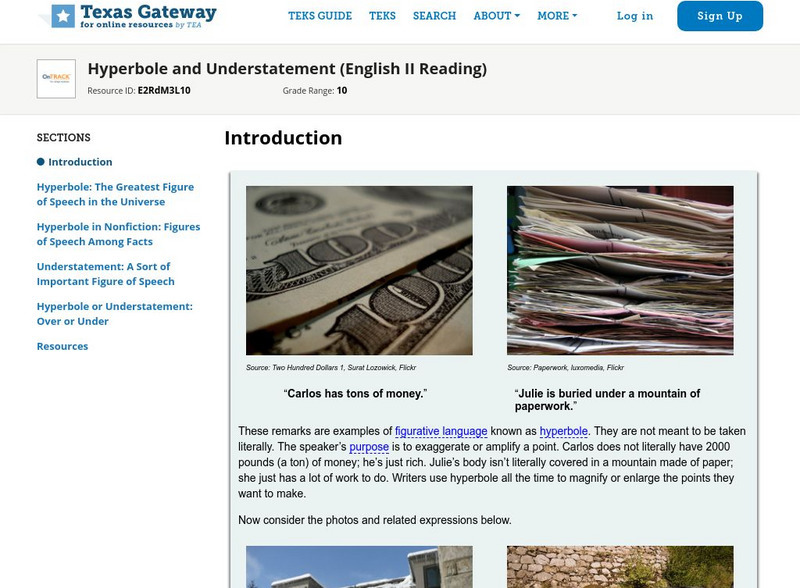
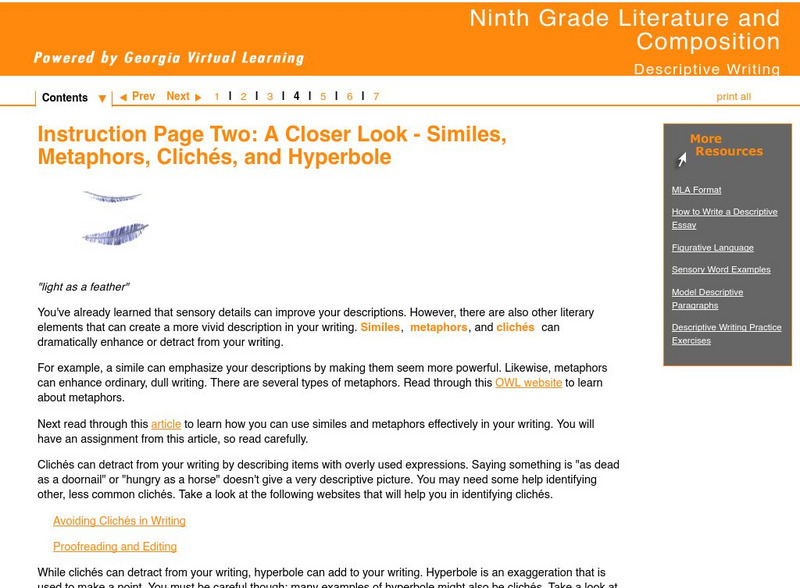



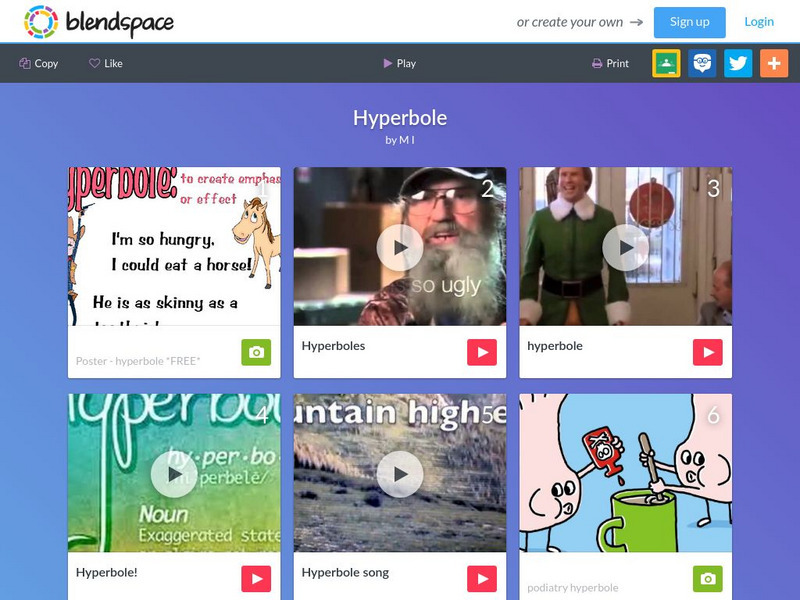

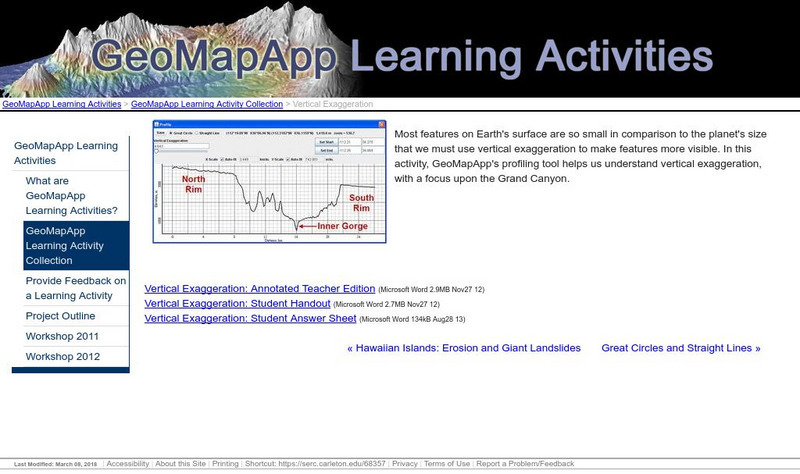
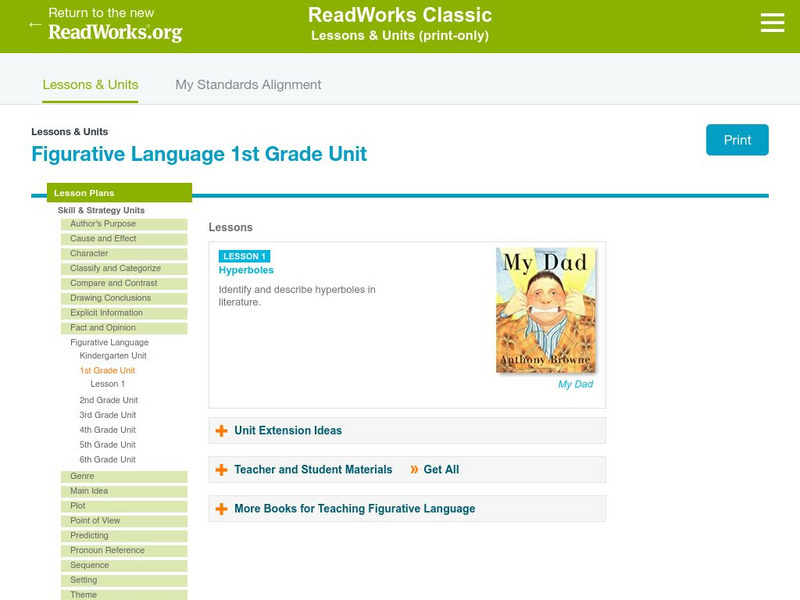
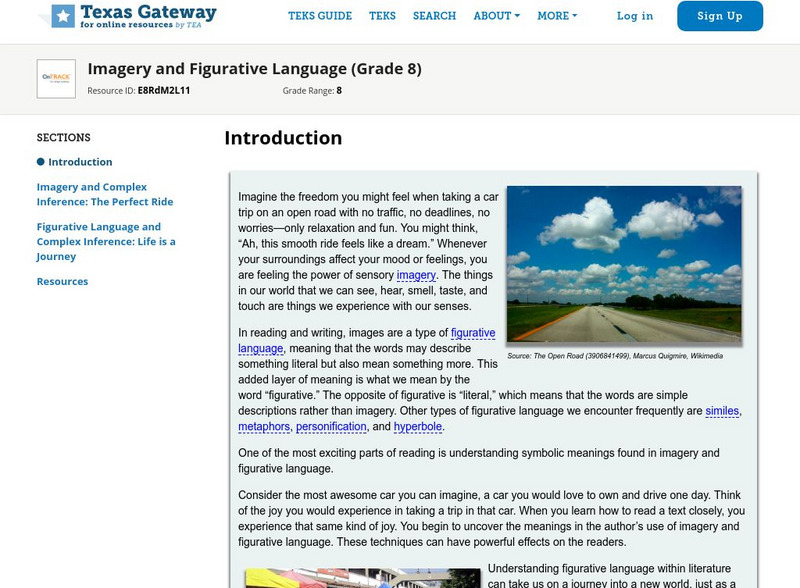
![Scholastic: Maniac Magee Literature Response Journal [Pdf] Unit Plan Scholastic: Maniac Magee Literature Response Journal [Pdf] Unit Plan](https://content.lessonplanet.com/knovation/original/34366-fce492bf681244da4e83765576fea0d2.jpg?1661408716)
